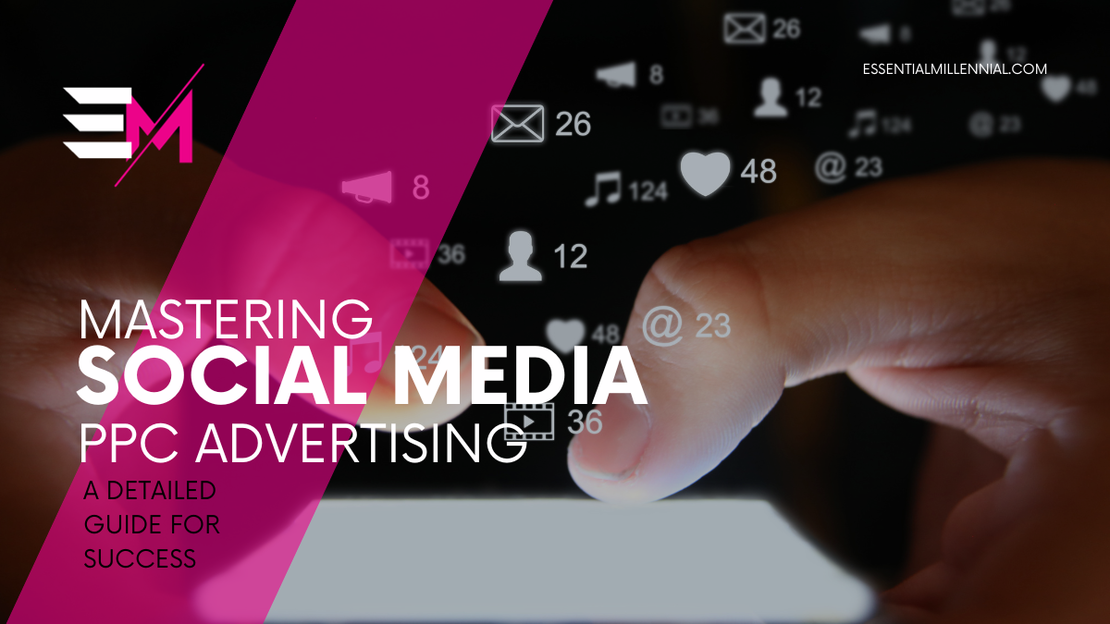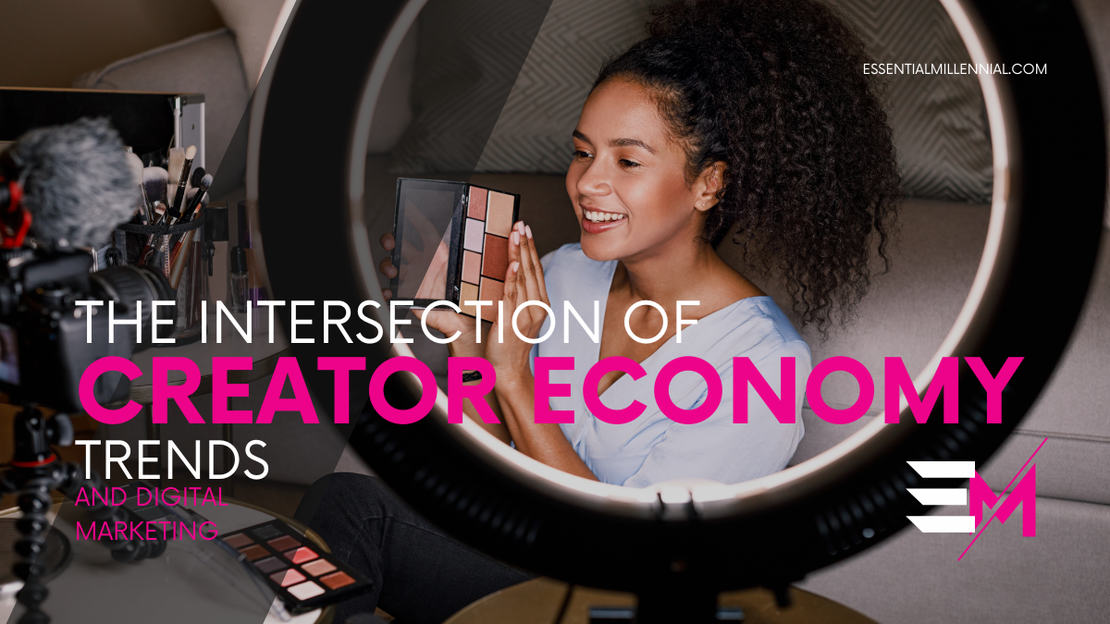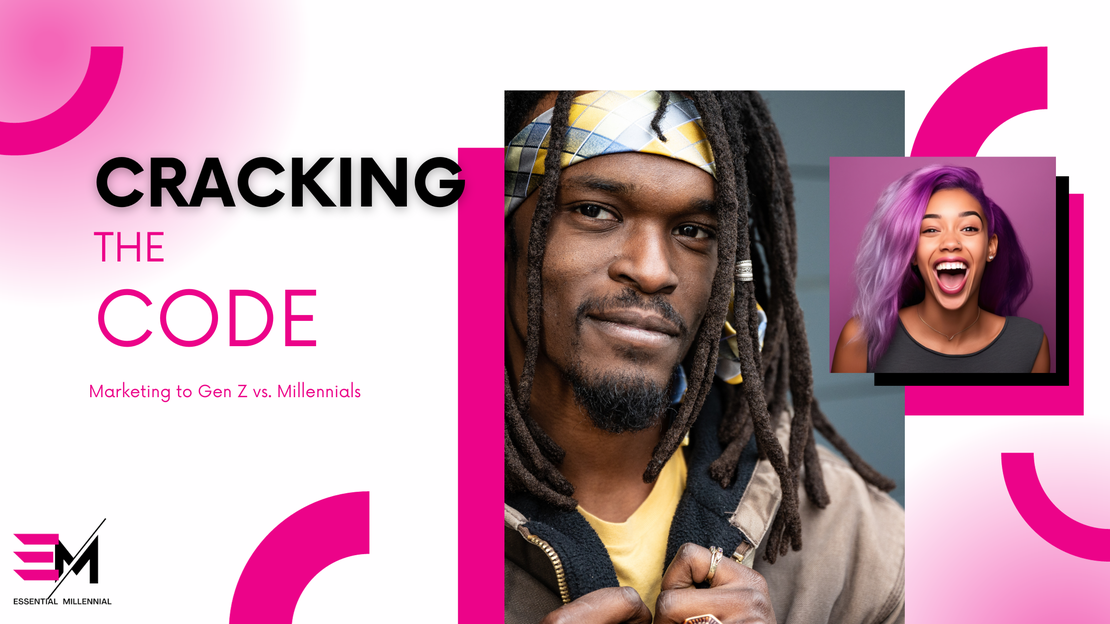
Mastering Social Media PPC Advertising: The Ultimate Guide
- Forrest Smith
- Digital marketing
- Monday, October 9, 2023
Welcome to the ultimate guide on mastering social media PPC (Pay-Per-Click) advertising. In today’s digital landscape, social media advertising is a powerful tool to reach your target audience effectively. Whether you’re a seasoned marketer or just starting, this guide will take you through the key strategies to master PPC advertising on major social media platforms, including Facebook, Instagram, LinkedIn, Twitter, TikTok, Google My Business/Maps, and YouTube.
Table of Contents:
- The Significance of PPC Advertising
- Discover the Power of PPC
- Benefits of PPC Campaigns
- Choosing the Right Social Media Platforms
- Facebook Advertising
- Instagram Advertising
- LinkedIn Advertising
- Twitter Advertising
- TikTok Advertising
- Google My Business/Maps Advertising
- YouTube Advertising
- Setting Up Your PPC Campaign
- Defining Goals and Objectives
- Audience Targeting
- Budgeting and Bidding Strategies
- Creating Engaging Ad Campaigns
- Ad Copy and Design
- Visual Content
- Ad Extensions
- Monitoring and Optimisation
- Tracking Key Metrics
- A/B Testing
- Budget Optimisation
- Expanding Your Reach
- Scaling Successful Campaigns
- Exploring New Platforms
- Conclusion: Mastering Social Media PPC Advertising
1. The Significance of PPC Advertising
Discover the Power of PPC Advertising
Pay-Per-Click (PPC) advertising is a digital marketing model that allows businesses to place ads on various platforms and pay a fee each time a user clicks on the ad. PPC advertising empowers businesses to reach their target audience with precision and measure the effectiveness of their campaigns. This form of online advertising is significant for several reasons:
1.1. Precision and Targeting
One of the standout advantages of PPC advertising is the ability to precisely target your audience. Platforms like Facebook, Instagram, LinkedIn, Twitter, TikTok, Google My Business/Maps, and YouTube provide an array of targeting options. These include demographics, interests, behaviours, location, and more. PPC campaigns can be tailored to reach specific audience segments, ensuring your message is seen by those most likely to engage with it.
1.2. Immediate Visibility
Unlike many traditional marketing methods, PPC advertising provides almost immediate visibility. Once your campaign is live, your ads are displayed to users, generating impressions and potential clicks right away. This speed and responsiveness make PPC an ideal choice for time-sensitive promotions, product launches, and events.
1.3. Cost Control and ROI
With PPC advertising, you have control over your budget. You set the maximum amount you’re willing to pay for each click and can adjust your budget at any time. This level of cost control ensures that your advertising expenditure aligns with your business goals. Moreover, PPC campaigns provide detailed metrics and analytics, enabling you to measure your return on investment (ROI) accurately.
1.4. Data-Driven Decisions
In the world of PPC advertising, data is king. Marketers have access to a wealth of data that can inform and enhance their campaigns. You can track everything from click-through rates (CTR) and conversion rates to quality scores and ad positions. This data allows you to make data-driven decisions, optimize your campaigns, and improve your overall marketing strategy.
1.5. Brand Exposure and Recognition
Consistent visibility in paid search results, especially when combined with organic search results, increases your brand’s exposure and recognition. Users are more likely to remember and trust brands they encounter multiple times. By appearing in both paid and organic results, your brand establishes authority and familiarity within your industry.
Benefits of PPC Campaigns
PPC campaigns offer a range of benefits that can have a transformative impact on your business. Let’s explore some of the key advantages in detail:
1.6. Immediate Results
Unlike some long-term digital marketing strategies, PPC campaigns can provide immediate results. Once you’ve created your ads and set your budget, your campaigns can go live almost instantly. This agility allows you to respond quickly to changing market conditions and take advantage of emerging opportunities.
1.7. Precise Audience Targeting
PPC platforms allow you to define and target specific demographics, interests, behaviours, and more. By doing so, you can ensure your ads reach the most relevant audience for your products or services. Precise targeting maximises the impact of your advertising spend and enhances your campaign’s effectiveness.
1.8. Full Cost Control
Budgets and bidding strategies are entirely within your control with PPC campaigns. You decide how much you’re willing to spend daily, ensuring you stay within your budget. Furthermore, the flexibility to adjust your budget at any time means you can allocate resources to the campaigns that are performing best.
1.9. Performance Tracking and Measurement
PPC platforms provide in-depth data and performance metrics. This wealth of information empowers you to assess the effectiveness of your campaigns and make informed decisions. Whether you’re analysing click-through rates, conversion rates, or ad quality scores, this data is invaluable for campaign optimisation.
1.10. Scalability
PPC campaigns can be scaled up or down based on your needs and objectives. When you identify successful campaigns, you can allocate additional budget and resources to maximise their impact. This scalability ensures you’re always getting the most out of your advertising efforts.
These are just some of the key benefits of PPC advertising. By leveraging these advantages, your business can experience significant growth and achieve various marketing objectives.
2. Choosing the Right Social Media Platforms
2.1. Facebook Advertising
Facebook is one of the world’s largest social media platforms, making it a prime choice for PPC advertising. Its vast user base provides access to diverse demographics and interests. You can create targeted campaigns and leverage various ad formats to reach your audience effectively.
2.2. Instagram Advertising
Instagram is owned by Facebook and offers seamless advertising integration. Known for its visual nature, Instagram is ideal for campaigns that rely on captivating imagery and videos. You can utilise Instagram’s ad formats to craft visually stunning advertisements.
2.3. LinkedIn Advertising
LinkedIn is the go-to platform for professional networking, making it perfect for B2B (business-to-business) advertising. The platform’s detailed user profiles enable precise targeting, focusing on job titles, industries, and more. LinkedIn is particularly effective for lead generation and promoting professional services.
2.4. Twitter Advertising
Twitter is a hub for real-time conversations and trending topics. PPC campaigns on Twitter can place your ads in front of an engaged and influential audience. The platform’s targeting options include keywords, interests, and demographics.
2.5. TikTok Advertising
TikTok is a rapidly growing platform known for its short-form videos and younger user base. Advertising on TikTok offers the potential to reach a diverse and engaged audience. With creative ad formats, you can capture the attention of users scrolling through their feeds.
2.6. Google My Business/Maps Advertising
Google My Business and Google Maps are essential for local businesses. These platforms allow you to promote your business to local customers actively seeking your products or services. Optimising your Google presence is crucial for improving your visibility in local searches.
2.7. YouTube Advertising
As one of the most popular video platforms, YouTube offers extensive advertising opportunities. You can reach a broad audience through video ads that appear before or during YouTube content. Leveraging YouTube’s wide reach can significantly boost brand exposure.
Each platform has unique characteristics, strengths, and audience demographics. When deciding where to allocate your advertising budget, consider your target audience and your campaign objectives. You may find that a combination of platforms works best to meet your goals.
3. Setting Up Your PPC Campaign
Defining Goals and Objectives
Defining your campaign’s goals and objectives is the foundational step in the PPC advertising process. Your objectives determine the direction of your campaign and the metrics by which you’ll measure its success.
3.1.1. Campaign Goals
Common PPC campaign goals include:
Lead Generation: If your primary objective is to acquire leads or inquiries, your campaign will focus on enticing users to take specific actions, such as signing up for a newsletter or requesting more information.
Sales: For e-commerce businesses, the ultimate goal is often to drive sales. Your campaign will centre around promoting products or services to generate purchases.
Website Traffic: Sometimes, the goal is simply to increase website traffic. This could be to boost overall site visits or direct users to specific pages.
Brand Awareness: If your focus is on building brand recognition and increasing visibility, your campaign may aim to generate impressions and promote your brand to a broad audience.
3.1.2. Objective Setting
Your objectives should be specific, measurable, achievable, relevant, and time-bound (SMART). For example, an objective might be to “Increase monthly website traffic by 20% over the next six months.” This objective is specific (20% increase), measurable (through web analytics), achievable (based on historical data), relevant (to your business), and time-bound (in six months).
Setting SMART objectives provides clarity and helps you stay focused throughout your campaign.
Audience Targeting
Successful PPC campaigns depend on delivering your message to the right audience. Precision targeting ensures that your ads are seen by users with a genuine interest in your products or services. Audience targeting options vary across platforms but may include:
Demographics: Define your audience by characteristics such as age, gender, and marital status.
Interests: Target users based on their hobbies and interests, including their online behaviours.
Behaviours: Focus on user behaviours such as their purchase history, device usage, or travel habits.
Location: Specify your audience’s location, whether by region, city, or even a radius around your business.
Keywords: Target specific keywords to reach users actively searching for related products or services.
Job Titles: On professional platforms like LinkedIn, you can target users by their job titles or industries.
Segmenting your audience allows you to tailor your ad content and adjust your bid strategy for each group. This personalisation enhances the relevance of your ads and increases the likelihood of user engagement.
3.3. Budgeting and Bidding Strategies
Your budget and bidding strategy play a critical role in your PPC campaign’s success. Establishing a realistic budget and selecting the right bidding strategy ensures your ads receive the exposure they deserve.
3.3.1. Setting Your Budget
Before launching your campaign, decide how much you’re willing to spend on a daily or monthly basis. This budget should align with your objectives and the estimated cost per click (CPC) for your chosen keywords and audience.
3.3.2. Bidding Strategies
PPC platforms offer various bidding strategies, allowing you to determine how you pay for clicks. Common bidding strategies include:
Manual CPC Bidding: This strategy allows you to set a maximum CPC for each keyword. It provides full control over your bids but may require more hands-on management.
Enhanced CPC: Enhanced CPC combines manual bidding with automated adjustments. The platform adjusts your bids to increase the likelihood of conversions.
Target CPA (Cost-Per-Acquisition): Specify your desired acquisition cost, and the platform optimizes your bids to achieve that target.
Target ROAS (Return on Ad Spend): This strategy focuses on maximizing your return on ad spend. You specify your desired ROAS, and the platform adjusts your bids accordingly.
Selecting the right bidding strategy depends on your goals and resources. Some businesses may prefer manual bidding for complete control, while others may opt for automated strategies to streamline the process.
4. Creating Engaging Ad Campaigns
Ad Copy and Design
Effective ad copy and design are essential for capturing users’ attention and encouraging them to take action. When creating your ad copy and design, keep the following principles in mind:
4.1.1. Clear and Concise Messaging
Your ad copy should convey your message clearly and concisely. Use straightforward language to communicate your value proposition or offer.
4.1.2. Compelling Headlines
Your ad’s headline is the first element users see. Make it attention-grabbing and relevant to the user’s search or interests.
4.1.3. Unique Selling Proposition (USP)
Highlight what sets your product or service apart. Why should users choose your business over competitors?
4.1.4. Call-to-Action (CTA)
A strong CTA prompts users to take action. Whether it’s “Buy Now,” “Learn More,” or “Sign Up,” your CTA should be compelling and relevant to the user’s intent.
4.1.5. Visual Content
Including high-quality images or videos in your ad design enhances its appeal. Visuals can showcase your products, services, or brand in action.
4.1.6. Mobile Optimisation
Ensure your ad campaigns are optimised for mobile devices. With many users accessing social media on mobile, mobile-friendly ads are crucial for success.
Ad Extensions
Ad extensions provide additional information and opportunities for interaction with your ad. They include callout extensions, site link extensions, and structured snippet extensions, among others. By utilising ad extensions, you can expand the content and value you provide to users.
5. Monitoring and Optimisation
Tracking Key Metrics
Monitoring the performance of your PPC campaigns is an ongoing process. Key metrics to track include:
5.1.1. Click-Through Rate (CTR)
CTR measures the percentage of users who clicked on your ad after viewing it. A high CTR indicates that your ad is relevant and engaging to users.
5.1.2. Conversion Rate
Conversion rate tracks the percentage of users who completed the desired action after clicking on your ad. Conversions might include making a purchase, signing up for a newsletter, or filling out a contact form.
5.1.3. Quality Score
Quality Score assesses the quality of your ads, keywords, and landing pages. Higher-quality ads receive benefits such as lower costs per click and better ad positions.
5.1.4. Ad Position
Ad position reflects where your ad appears on the search results page or platform. A higher position generally garners more clicks but may come at a higher cost.
5.1.5. Return on Investment (ROI)
ROI calculates the profitability of your PPC campaigns. It measures the return generated by your ad spend.
Regularly monitoring these metrics allows you to assess the effectiveness of your campaigns. If you notice underperforming ads or keywords, you can take steps to optimise them and improve results.
5.2. A/B Testing
A/B testing, also known as split testing, involves creating two or more versions of an ad to compare their performance. You can experiment with different elements, such as ad copy, visuals, or headlines, to determine which resonates most with your audience.
A/B testing provides valuable insights that can inform your ad optimisation strategy. By making data-driven decisions, you can continually enhance your campaign’s performance.
5.3. Budget Optimisation
Regularly review your budget allocation to ensure you’re maximising the impact of your campaigns. Identify high-performing campaigns and allocate more budget to them while reducing resources for underperforming ones. This budget optimisation approach ensures that your advertising expenditure aligns with your business goals.
6. Expanding Your Reach
Scaling Successful Campaigns
When you identify campaigns that yield positive results, consider scaling them. Expanding your successful campaigns can increase your brand’s visibility and reach a larger audience. It’s important to maintain the same level of quality and relevance as you scale up your campaigns.
Exploring New Platforms
While focusing on your existing campaigns, don’t forget to explore new platforms. Emerging social media platforms may present fresh opportunities to engage with your target audience. Keeping an eye on trends and platforms allows you to stay ahead of the curve and maintain a competitive edge.
7. Conclusion: Mastering Social Media PPC Advertising
Mastering social media PPC advertising is an ongoing journey. By unlocking the full potential of your campaigns on Facebook, Instagram, LinkedIn, Twitter, TikTok, Google My Business/Maps, and YouTube, you can achieve your marketing objectives with precision and reach your target audience effectively.
The significance of PPC advertising lies in its precision, cost control, immediate visibility, data-driven decisions, and scalability. It empowers businesses to connect with their audience at the right time and with the right message.
As you navigate the world of PPC advertising, choosing the right social media platforms, defining your goals, and optimising your campaigns will be crucial. Effective ad creation, monitoring, and budget optimisation ensure that your campaigns deliver impressive results. By scaling successful campaigns and exploring new platforms, you can continue to expand your reach and stay at the forefront of digital marketing.
Remember, PPC advertising is a dynamic field that requires continuous learning and adaptation. By staying informed about industry trends and implementing best practices, you can master social media PPC advertising and unlock its full potential.
This comprehensive guide has covered the essentials of mastering social media PPC advertising. Whether you’re looking to promote your brand, generate leads, or drive sales, PPC advertising can be a powerful tool in your digital marketing arsenal. Start implementing these strategies, measure your results, and refine your approach to achieve your marketing goals. It’s time to unleash the full potential of your social media PPC advertising campaigns.


